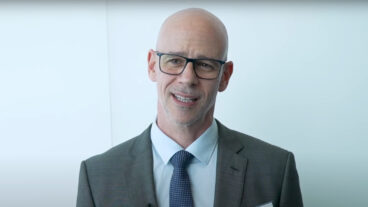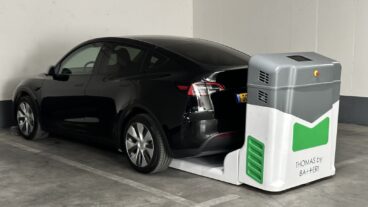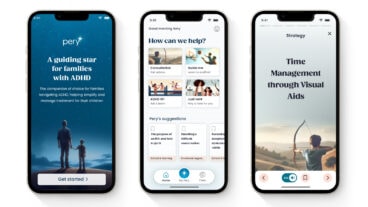A patented smartphone technology, originally created for the blind, has now been built into a steering-wheel-mounted controller and app to help sighted drivers use smartphone apps on the road without looking at their handsets.
The product, dubbed RayGo, was launched on the Indiegogo crowdfunding site in March and crossed the 40 percent funding goal mark in the campaign’s first week.
The team behind RayGo, Project RAY, previously developed the world’s first smartphone for people with visual disabilities.
“The same technology that helps thousands of blind people use smartphones is now used to battle the distracted-driving phenomenon,” says founder Michael Vakulenko, noting that an estimated 45% of Americans read text messages while driving, and as many as 37% type messages with one hand on the wheel.
“Smartphone usage on the road has become a serious problem and a real safety hazard. While working on the RAY smartphone for the blind, it suddenly hit us that the solution to this problem has been in our hands all along. Eyes-free technology can help more than just the blind.”
https://www.youtube.com/watch?v=cEao7pJV_Dg
RayGo is comprised of a five-key Bluetooth controller that is mounted on the steering wheel, and the RayGo Android app that converts the user’s favorite apps to DriveMode –a simplified version of these apps that allows for using them via voice only.
In addition, RayGo monitors and adapts to steering wheel movements, speed and location in real time. The technology holds back notifications, pauses message playbacks and even speaks more slowly when necessary, in order to keep the driver from getting too distracted.
Vakulenko says RayGo is almost ready for mass production, and the Indiegogo campaign allows early supporters to pre-order for $45 instead of $79.
From RAY to RayGo
In 2011, Project RAY set out to bring smartphones and all they offer to the blind and visually impaired.
“In cooperation with the Qualcomm Wireless Reach program, we created an affordable smartphone device tailored for the unique needs of eyes-free operation. This product has drastically improved the lifestyle of thousands,” says Vakulenko
Currently Project RAY offers two products: A smartphone preloaded with the software, sold in Israel, the United States and Holland; and a software-only version that can be downloaded from Google Play. The latter product has less functionality than the integrated device, but it’s obviously filling a need, as Vakulenko sees downloads from all over the globe.
A couple of times while he was driving, he found himself using the RAY phone, and that gave him the idea to adapt the technology for sighted users. This process took six months, including the tech side and the industrial design side.
“We worked with a very experienced industrial designer, Elisha Tal of I2D [in Tel Aviv]. He spent lots of time figuring out how to fit this into the car in terms of geometry and the car’s overall design,” says Vakulenko.
After they had a prototype, the Project RAY team of five tested it out and then ran digital focus groups. “We think is extremely easy to use. After all, it evolved from our work with blind people who are not tech-savvy. The actions are very stable from app to app so once you know one, you know all of them.”
The next step is moving the current design into the production phase. “We already have a connection with an Israel-based company working in China to take products and get them ready for mass manufacturing,” says Vakulenko.
Pending Apple’s approval, the Tel Aviv-based Project RAY hopes that RayGo will also be able to support iOS phones in the future.
For more information, click here.
















